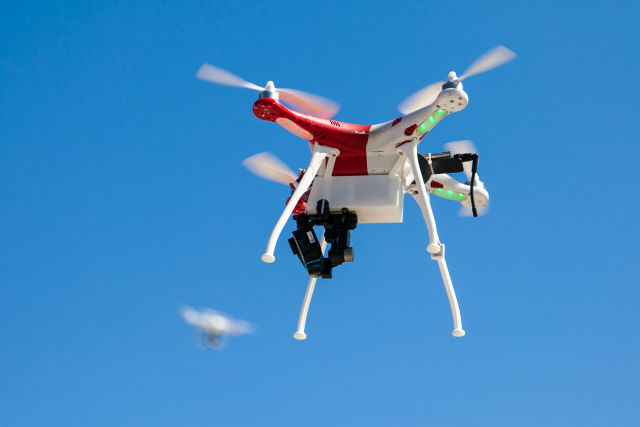Small drones would damage aircraft once every 1.87 million years.

The Federal Aviation Administration has pushed forward strict rules for the operation of small consumer drones. Drones weighing more than 250 grams (a little more than half a pound) will have to be registered with the FAA, and there are restrictions on where they can be flown. The regulations are largely prompted by fears that the toy-sized flyers will pose a danger to commercial and civil aircraft—fears that new research suggests are unfounded. That research, shown in a study just published by George Mason University’s Mercatus Center, was based on damage to aircraft from another sort of small, uncrewed aircraft—flying birds.
Much of the fear around drones hitting aircraft has been driven by FAA reports from pilots who have claimed near-misses with small drones. But an investigation last year by the Academy of Model Aeronautics (AMA) found that of the 764 near-miss incidents with drones recorded by the FAA, only 27 of them—3.5 percent—actually were near misses. The rest were just sightings, and those were often sightings that took place when drone operators were following the rules. The FAA also overcounted, including reports where the pilot said explicitly that there was no near miss and some where the flying object wasn’t identified, leading the AMA to accuse the FAA of exaggerating the threat in order to get support for its anti-drone agenda.
There hasn’t yet been an incident in which a drone has struck an aircraft. But bird strikes (and bat strikes) do happen, and there’s a rich data set to work from to understand how often they do. Researchers Eli Dourado and Samuel Hammond reasoned that the chances of a bird strike remain much higher than that of an aircraft hitting a drone because “contrary to sensational media headlines, the skies are crowded not by drones but by fowl.”
The researchers studied 25 years of FAA “wildlife strike” data, reports voluntarily filed by pilots after colliding with birds. The data included over 160,000 reported incidents of collisions with birds, of which only 14,314 caused damage—and 80 percent of that number came from collisions with large or medium-sized birds such as geese and ducks.
Despite the rise in reported bird strikes over time (largely driven by improvements to the FAA’s reporting system), the number involving damage has remained relatively constant, numbering in the hundreds per year—a statistical blip, considering that there are approximately 27,000 commercial aircraft flights per day in the US. And in 25 years, there have been only 37 incidents of wildlife strikes that caused injuries or death. The most dramatic of them, the water landing of US Airways Flight 1549 in 2009, was caused by a flock of geese being sucked into both the plane’s engines. The one commercial aircraft fatality was caused not by a bird strike but by a collision with a pair of deer during landing in 2000.
“On average, only 3 percent of reported small-bird strikes ever result in damage, compared to 39 percent of large-bird strikes,” Dourado and Hammond reported. “Given the voluntary nature of strike reporting, the true percentage of strikes causing damage is probably much lower, as strikes that do not cause damage can be either missed or underreported.”
Using the FAA data and bird census data, the researchers calculated the probability of airborne wildlife striking an aircraft. “In 2014, there were 13,414 reported collisions with birds and flying mammals, counting incidents in which flocks of birds hit an aircraft as a single collision,” the researchers noted. “As there are on the order of 10 billion birds in US airspace, this means that plausibly 1 bird in 1 million collides with an aircraft every year.”
Birds spend much more time in the air than consumer drones, which have a short battery life. Birds also don’t necessarily avoid areas where airplanes are apt to hit them. Based on usage statistics, compared with bird behavior, the researchers estimated that for every 100,000 hours of flight time for drones weighing up to 2 kilograms, there would be 0.00000612 collisions causing damage to aircraft. “Or to put it another way,” the pair wrote, “one damaging incident will occur no more than every 1.87 million years of 2kg UAS flight time.”
And the frequency of injuries caused by drone collisions, they estimated, would be another two orders of magnitude smaller—happening once every 1.87 million years of operation. “This appears to be an acceptable risk to the airspace,” they concluded.
http://arstechnica.com/tech-policy/2016/03/researchers-say-faa-is-really-overblowing-risk-posed-by-small-drones/